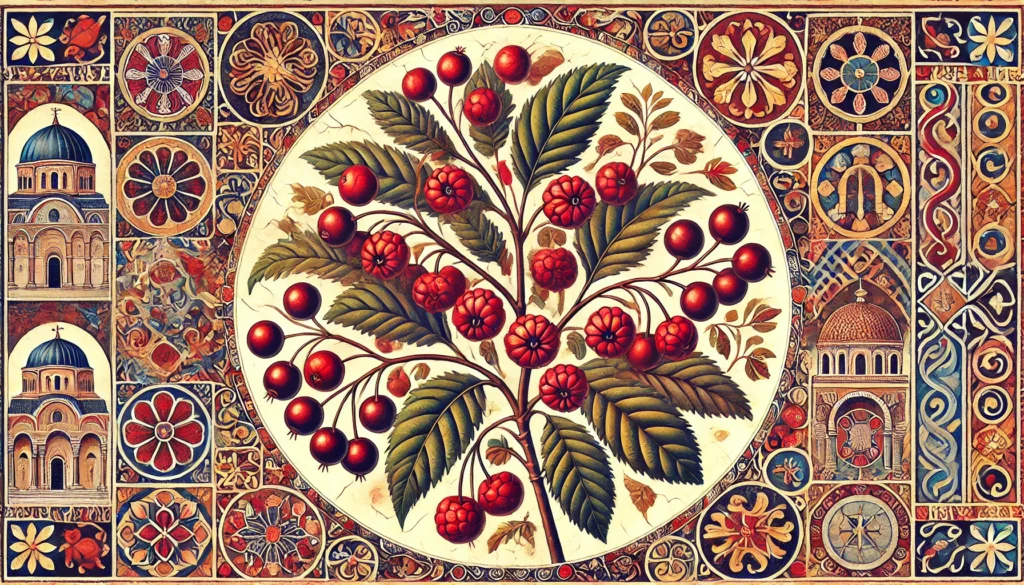

Home » Cat Plants » Choke Cherry Plant Dangers: How It Can Harm Your Cat?

The choke cherry (Prunus virginiana), also known as chokecherry, wild cherry, or bitter-berry, is a deciduous shrub or small tree native to North America. While the ripe berries are edible, the rest of the plant, including the seeds, leaves, and bark, is toxic to cats.
Choke cherry trees are commonly found in the wild, along fencerows, and sometimes cultivated as ornamental plants. All parts of the choke cherry plant, except the ripe fruit pulp, contain cyanogenic glycosides. When ingested, these compounds release cyanide, which is poisonous to cats and other animals.
Ingestion may cause mild gastrointestinal upset, but is generally not life-threatening.
Ingestion can result in mild symptoms like vomiting, diarrhea, or drooling. Rarely fatal but may require veterinary care.
Eating these plants can lead to more pronounced symptoms like abdominal pain, lethargy, or difficulty breathing. Veterinary intervention may be necessary.
Ingesting even small amounts can cause severe symptoms like organ damage, seizures, or cardiac failure without rapid treatment.
All parts of these plants are extremely poisonous to cats and can quickly lead to death, even with immediate veterinary care.
** Please note: Please note that toxicity level can vary based on the amount ingested and the specific cat. It's always best to keep these plants completely inaccessible to cats and seek immediate veterinary care or call the poison hotline if you suspect your cat has ingested any part of a toxic plant.
If a cat eats any toxic part of a choke cherry tree, it may experience cherry poisoning symptoms. Signs of choke cherry poisoning in cats include:
If you suspect your cat has ingested any part of a choke cherry tree, seek immediate veterinary care. Your vet will likely perform the following to diagnose cherry poisoning:

A: Yes, cats can be allergic to Choke Cherry. Symptoms of an allergic reaction may include itching, sneezing, and skin irritation.
A: Yes, Choke Cherry is highly toxic to cats. The leaves, stems, and seeds contain cyanogenic glycosides, which can release cyanide when chewed and ingested, leading to severe symptoms.
A: Symptoms of Choke Cherry poisoning in cats include vomiting, diarrhea, difficulty breathing, red gums, and dilated pupils. Immediate veterinary care is crucial if ingestion is suspected.
A: To prevent contact, ensure that Choke Cherry is not present in your home or garden. Keep your cat indoors or monitor outdoor activities closely to avoid exposure to Choke Cherry trees or fruits.
A: If your cat ingests Choke Cherry, contact your veterinarian immediately. Do not induce vomiting unless instructed by a veterinary professional. Immediate medical attention is necessary.
A: Choke Cherry is more commonly found in wild areas rather than home gardens. However, if you do have this plant in your vicinity, it is important to ensure it is kept out of reach of cats to prevent accidental ingestion.
Native Americans have used choke cherries as an important food and medicinal plant for centuries. The berries were collected, dried, and made into pemmican. Choke cherry bark was used to make a tea for treating colds and other ailments. Today, choke cherries are still used to make jams, jellies, syrups and wines.
The trees provide food and shelter for wildlife. However, the plant has become weedy and invasive in some areas.
Please note: The information shared in this post is for informational purposes only and should not be considered as veterinary medical advice.
🐾 A hilarious or heart-melting cat video
🐾 Our latest paws-on review of a cool cat toy